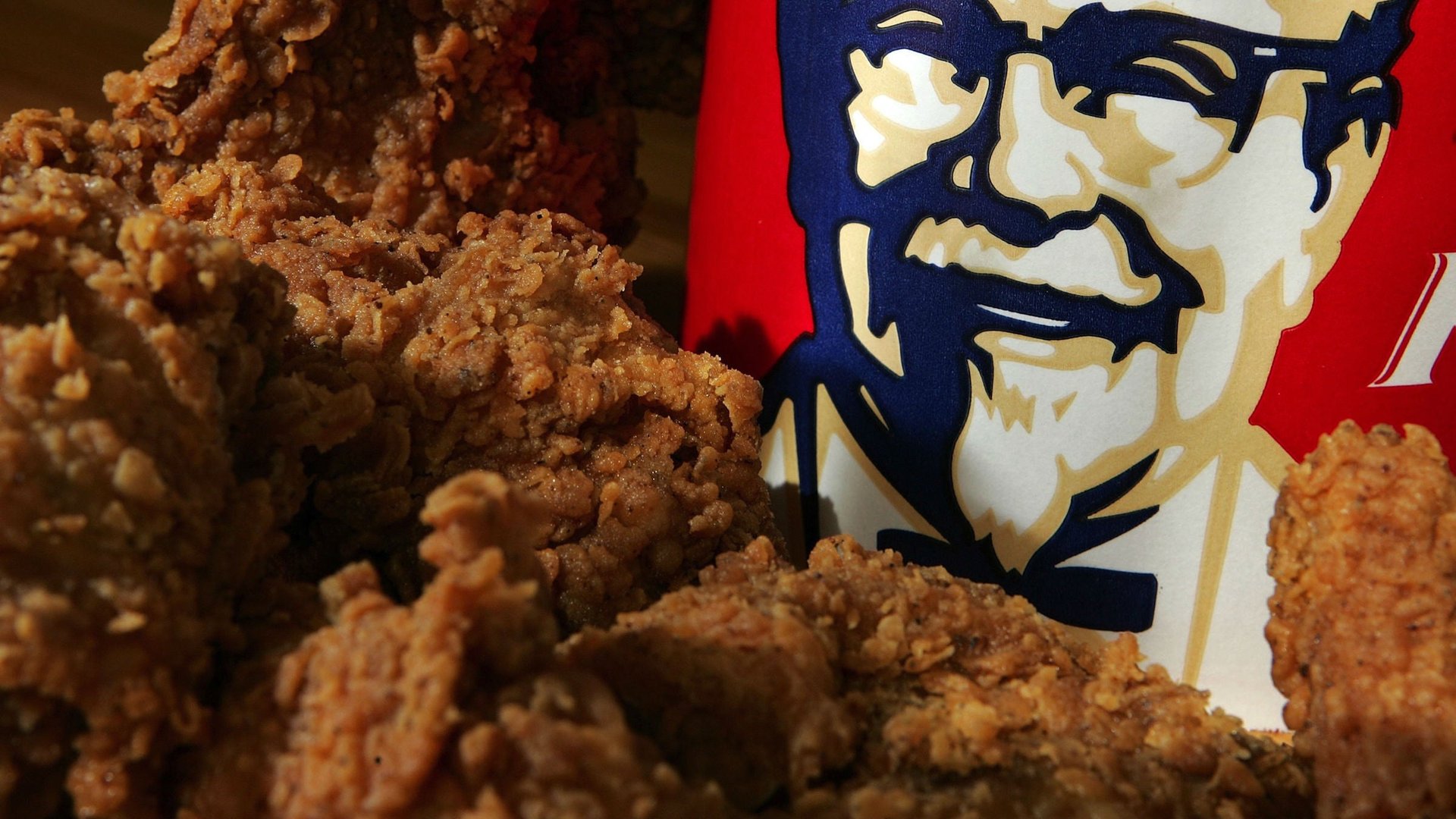KFC makes most of its money in China, and now that’s a big problem
KFC is best known for serving fried chicken to Americans by the bucketful, but it actually makes most of its money in China. And China is the most profitable market of KFC’s parent company Yum Brands, which also includes Pizza Hut and Taco Bell. Yum made 42% of its profit last year in China (pdf, pg. 4), where KFC’s salty fare has been extremely popular.


KFC is best known for serving fried chicken to Americans by the bucketful, but it actually makes most of its money in China. And China is the most profitable market of KFC’s parent company Yum Brands, which also includes Pizza Hut and Taco Bell. Yum made 42% of its profit last year in China (pdf, pg. 4), where KFC’s salty fare has been extremely popular.
That’s mostly been great for Yum—at one point, KFC was opening a new location in China every 18 hours—but now it’s a problem. Yum’s profits fell last quarter on weak China sales as fears of bird flu kept customers wary of poultry. Photos of vacant KFCs have been floating around Chinese social media as the outbreak’s death toll ticks higher.
Yum is often held up as a model for foreign companies doing business in China and a way for investors wary of Chinese businesses to invest in the country. But the company is quickly losing its charm in China where business accounted for 42% of Yum’s profit (pdf, p. 4) last year—and, as a result, among investors. (The company didn’t respond to a request for comment.)
In reporting earnings yesterday, Yum strangely left its forecast of growth for the year intact. “If they dont revise it, they are setting themselves up for big disappointment,” said Junheng Li, head of research at China-focused research firm Warren Capital.
Shunted to the basement
Yum was one of the first multinational companies to enter China, opening a KFC there in 1987. It now owns 4,200 KFC restaurants in the country and held about 40% of the fast food market in 2012. Then disaster struck late last year, when Chinese media accused two of Yum’s suppliers of injecting chickens with excessive hormones and antibiotics. Customers boycotted, bloggers railed, and KFC sales promptly plunged in China.
Even before that, Yum’s profit margins were being squeezed by rising food and real estate prices. Instead of securing prime space in Chinese shopping malls, KFC outlets are increasingly being shunted to the basement, says Li. Moreover, KFC is facing competition from local and other East Asian fast food chains, which are gaining market share. Local chains like Real Kung Fu and Country Style Cooking Restaurant Chain and Japan’s Ajisen and Taiwan’s Dicos are often better at tailoring food to local tastes.
“For Yum, the primary growth stage is behind them,” Li says. “Yum was once seen as this novelty experience. Now there are many other novelty places.”
Image spinning out of control
As Yum continues its expansion in China, it’s likely to run into more chicken problems. China’s 25 poultry suppliers often subcontract to the country’s small-scale farms, increasing the chance of contamination. Yum could source its chicken from the US or Brazil, but the transportation costs would be expensive.
KFC has been trying to rehabilitate its image with promises to stop using small suppliers. It also hosted a poetry contest. But aside from still-angry Chinese residents, Yum faces even more formidable foes: state media consumer watchdogs that target foreign companies. As it did with Apple, state media accused Yum of “arrogance” during the contaminated chicken scandal.
In this kind of environment, Colonel Sander’s golden days in China appear to be numbered.